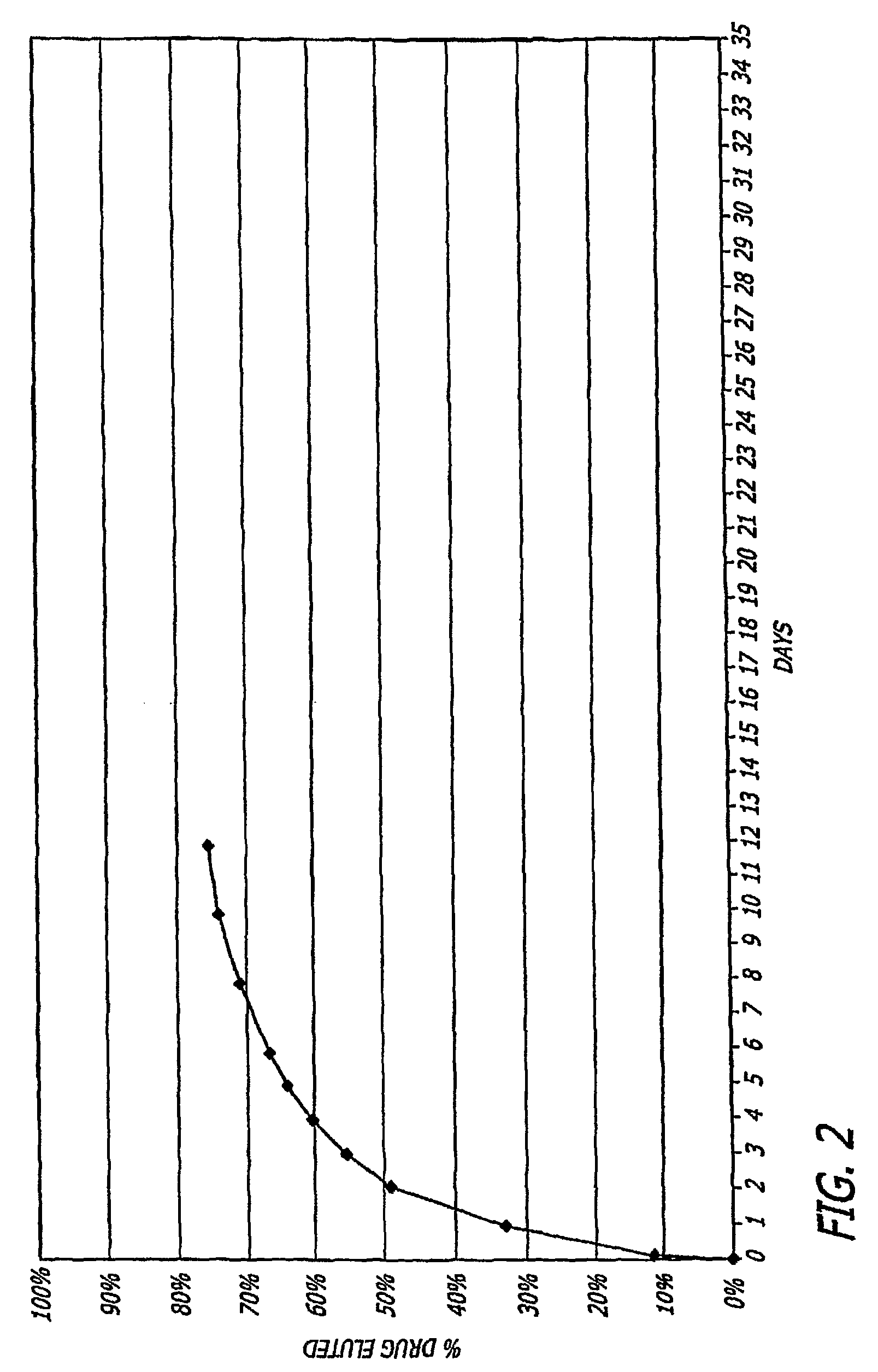4-aza-caprolactone-based polymeric compositions useful for the manufacture of biodegradable medical devices and as medical device coatings
a polymer composition and azacaprolactone technology, applied in the field of new polymer compositions, can solve the problems of difficult modification of polymer structure, difficult modification of polymer physical characteristics, and difficulty in adjusting to meet specific clinical demands
- Summary
- Abstract
- Description
- Claims
- Application Information
AI Technical Summary
Benefits of technology
Problems solved by technology
Method used
Image
Examples
example 1
Synthesis of Biodegradable Polymer of Formula III
[0087]
[0088]wherein a:b:c:d are repeating units and wherein a=0-20,000, b=1-20,000, c=1-2000 and d=0-20,000 and R is a hydrogen, a straight chain or branched C1-C18 alkyl, a C3-C18 cycloalkyl, a straight chain or branched C2-C18 alkenyl or alkynyl, a straight chain or branched C1-C18 alkoxy, an aryl, protected carboxyl, a substituted or unsubstituted amino group, an amino acid residue, or hydroxyl. In one particular embodiment R is a methyl group (D94).
[0089]In one embodiment of the present invention, the polymer of Formula II is referred to hereinafter as “D94” and is synthesized as follows: 0.5 gram of PEG-3400, 5 gram of D,L-lactide (3,6-dimethyl-1,4-dioxane-2,5-dione), 5 gram of L-lactide ((3s)-cis-3,6-dimethyl-1,4-dioxane-2,5-dione), 1 gram of 4-acetyl-[1,4]oxazepan-7-one (Formula I, R=methyl) and 0.12 gram of Tin (II) 2-ethyl hexanoate were added into a 100 mL glass serum bottle. A Teflon-coated magnetic stir bar was added into ...
example 2
Synthesis of biodegradable Polymer of Formula III
[0091]
[0092]wherein a:b:c are repeating units and wherein a=0-20,000, b=1-2000 and c=1-20,000 and R is a hydrogen, a straight chain or branched C1-C18 alkyl, a C3-C18 cycloalkyl, a straight chain or branched C2-C18 alkenyl or a straight chain or branched C1-C18 alkoxy, an aryl, protected carboxyl, a substituted or unsubstituted amino group, an amino acid residue, or hydroxyl. In one particular embodiment R is a methyl group (D104).
[0093]In one embodiment of the present invention, the polymer of Formula III is referred to herein after as “D104” and is synthesized as follows: 0.5 gram of PEG-3400, 9 gram of D,L-lactide (3,6-dimethyl-1,4-dioxane-2,5-dione), 0.5 gram of N-substituted 4-aza-caprolactone and 0.10 gram of Tin (II) 2-ethyl hexanoate were added into a 100 glass serum bottle. A Teflon-coated magnetic stir bar was added into the bottle and the bottle was sealed with a Teflon-coated silicon septum with crimpier. The reaction bott...
example 3
Synthesis of Biodegradable Polymer Having the Formula IV
[0095]
[0096]wherein a:b:c are repeating units for each polymer and wherein a=0-20,000, b=1-20,000 and c=1-20,000 and R is a hydrogen, a straight chain or branched C1-C18 alkyl, a C3-C18 cycloalkyl, a straight chain or branched C2-C18 alkenyl or alkynyl, a straight chain or branched C1-C18 alkoxy, an aryl, protected carboxyl, a substituted or unsubstituted amino group, an amino acid residue, or hydroxyl. In one particular embodiment R is a methyl group (D105).
[0097]In one embodiment of the present invention, the polymer of Formula IV is referred to herein after as “D105” and is synthesized as follows: 9 gram of D,L-lactide (3,6-dimethyl-1,4-dioxane-2,5-dione), 0.5 gram of N-substituted 4-aza-caprolactone, 0.5 gram of ε-caprolactone and 0.10 gram of Tin (II) 2-ethyl hexanoate were add into a 100 mL glass serum bottle. A Teflon-coated magnetic stir bar was added into the bottle and the bottle was sealed with Teflon-coated silicon ...
PUM
| Property | Measurement | Unit |
|---|---|---|
| thick | aaaaa | aaaaa |
| thick | aaaaa | aaaaa |
| diameter | aaaaa | aaaaa |
Abstract
Description
Claims
Application Information
 Login to View More
Login to View More - R&D
- Intellectual Property
- Life Sciences
- Materials
- Tech Scout
- Unparalleled Data Quality
- Higher Quality Content
- 60% Fewer Hallucinations
Browse by: Latest US Patents, China's latest patents, Technical Efficacy Thesaurus, Application Domain, Technology Topic, Popular Technical Reports.
© 2025 PatSnap. All rights reserved.Legal|Privacy policy|Modern Slavery Act Transparency Statement|Sitemap|About US| Contact US: help@patsnap.com



